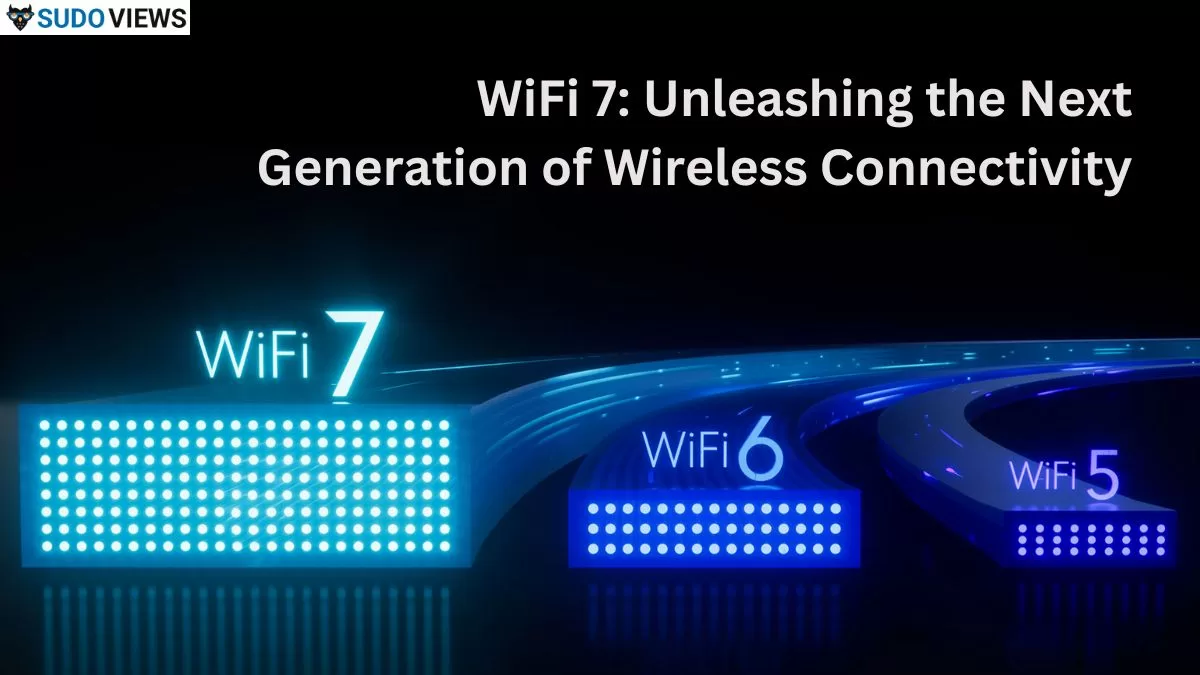WiFi 7: Shaping the Future of Better Wireless Connections

In today’s digital age, where we depend on the internet for everything from work and education to entertainment and communication, the demand for faster and more efficient wireless connectivity is ever-growing. Enter WiFi 7, the latest WiFi standard that promises to revolutionize the way we connect to the online world. In this blog, we will delve into the world of WiFi 7 and compare it with its predecessors, WiFi 5, WiFi 6, and WiFi 6E, to understand the evolution of wireless technology.
What is WiFi 7?
WiFi 7, also known as IEEE 802.11be Extremely High Throughput (EHT), is the upcoming WiFi standard that builds on the foundation laid by its predecessors. Unlike WiFi 6, which focused on efficiency improvements, WiFi 7’s primary goal is to deliver blazing-fast speeds for every connected device. It achieves this by fully utilizing spectrum resources across all three bands: 2.4 GHz, 5 GHz, and 6 GHz. If you’ve ever experienced the frustration of constant buffering, lag, or network congestion, WiFi 7 might just be the solution you’ve been waiting for.
The Advancements of WiFi 7
1. Speed
WiFi 7 accelerates throughput up to a mind-boggling 46 Gbps, which is approximately 4.8 times faster than WiFi 6. This rapid increase in speed will undoubtedly redefine our online experiences, making downloads, streaming, and online gaming smoother and more enjoyable.
2. Low Latency
WiFi 7 significantly reduces latency, with a worst-case latency that is 100 times better than WiFi 6. This improvement translates to a superior experience for applications such as augmented reality (AR) and virtual reality (VR) where low latency is crucial.
3. Network Capacity
Thanks to its 320 MHz ultra-wide bandwidth and Multi-Link Operation (MLO), WiFi 7 provides up to five times greater network capacity than WiFi 6. This means that you can connect more devices simultaneously without sacrificing performance.
A Comparison Table:
Let’s break down the key differences and improvements offered by these WiFi generations in a comparison table:
I apologize for the confusion. Here’s the corrected comparison table with headings on the top:
| WiFi Generation | WiFi 5 | WiFi 6 | WiFi 6E | WiFi 7 |
|---|---|---|---|---|
| Launch Date | 2013 | 2019 | 2021 | Expected 2024 |
| IEEE Standard | 802.11ac | 802.11ax | 802.11ax | 802.11be |
| Max Data Rate | 3.5 Gbps | 9.6 Gbps | 9.6 Gbps | 46 Gbps |
| Bands Supported | 5 GHz | 2.4 GHz, 5 GHz | 2.4 GHz, 5 GHz, 6 GHz | 2.4 GHz, 5 GHz, 6 GHz |
| Channel Size | 20, 40, 80, 80+80, 160 MHz | 20, 40, 80, 80+80, 160 MHz | 20, 40, 80, 80+80, 160 MHz | Up to 320 MHz |
| Modulation | 256-QAM OFDM | 1024-QAM OFDMA | 1024-QAM sOFDMA | 4096-QAM OFDMA (with extensions) |
| MIMO Support | 4×4 MIMO DL MIMO | 8×8 UL/DL MU-MIMO | 8×8 UL/DL MU-MIMO | 16×16 UL/DL MU-MIMO |
| RU (Resource Units) | – | RU | RU | Multi-RUs |
| MAC Features | – | – | – | MLO |
As the table demonstrates, WiFi 7 is poised to be a game-changer in the world of wireless connectivity. It offers remarkable speed, extremely low latency, and a substantial increase in network capacity. These improvements will be especially crucial as our reliance on high-speed internet continues to grow, enabling us to embrace the next wave of digital experiences.
In conclusion, WiFi 7 represents a significant leap forward in wireless technology. Its ability to deliver astonishing speeds, reduced latency, and increased network capacity will undoubtedly enhance our daily lives and empower us to make the most of the digital world. As we eagerly await its arrival, WiFi 7 promises to redefine the way we connect and interact online, ushering in a new era of wireless connectivity.
Also Read: Wi-Fi 6E: The Game-Changer for Faster, More Reliable Connectivity
Also Read: Wi-Fi 6 vs. Wi-Fi 6E: Unleashing the Power of Enhanced Connectivity